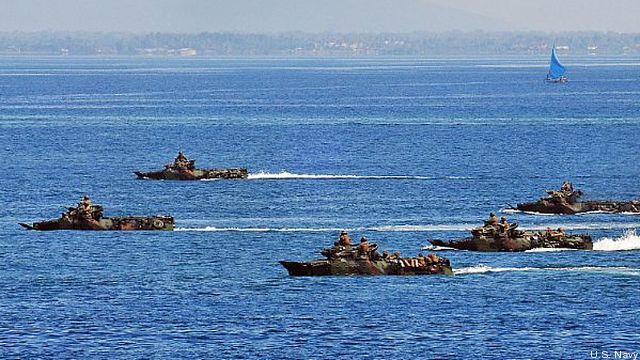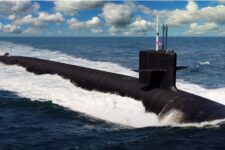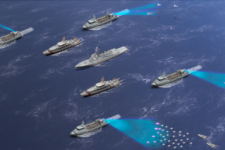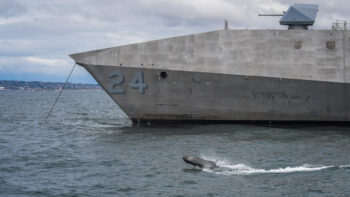
WASHINGTON: The Navy’s strategy to modernize its amphibious fleet will leave the Marine Corps shorthanded despite plans to buy 20 new ships over the next few decades, a Congressional Budget Office report claims.
The Navy will hit its goal of 33 amphibious ships under the plan but will not reach the 38-ship fleet the Marines want, according to the report by CBO naval expert Eric Labs. The Navy plan goes like this: it will buy 20 new amphibs over the next 30 years beginning in fiscal year 2012. CBO analysts estimate it will cost the Navy roughly $50 billion to buy those ships. During the same period, the Navy will retire 22 older amphibs from the fleet. CBO estimates the Navy won’t be able to hit 33 amphibious ships until 2016. Once they do, the service will be able to maintain those levels until 2032. That is when the scheduled ship retirements start outpacing the number of new amphibs entering the service. That leaves the Navy with a 33-ship amphib fleet for about 16 years. “At no point . . . would the force reach the Marine Corps’ objective of 38 amphibious ships,” Labs writes. But the Navy believes their service brethren may be overstating their need for more amphibs.
In a briefing by the Navy to the CBO, service officials note the Marines have dramatically expanded the kinds of missions it wants their amphibs to perform. “Although the specific reasons why the combatant commanders would use amphibious ships are classified, they fall into the categories of providing humanitarian relief, responding to crises, and engaging in exercises with the naval forces of other countries,” Labs writes. Those missions were tacked onto the list of combat operations the amphib fleet is also expected to perform. More missions equals more ships — more ships the Navy simply cannot afford, Navy officials have argued.
Marine Commandant Gen. James Amos has been lobbying hard for the 38-ship amphib fleet in recent months. Amos says those amphibs are integral to the future of the Corps. These ships will also be key in getting the Marines back to their amphibious roots and away from their image as a “second land army” the four-star general wrote in a letter to Defense Secretary Leon Panetta. A special Marine Corps task force is already drafting amphibious battle plans for the 21st century. But with the congressional Super Committee’s failing to find $1.2 trillion in savings earlier this month, the Marines may soon have bigger problems than just getting the number of amphibs it needs.
After chilly silence, US SecDef, China defense minister hold first talks
Having regular mil-to-mil talks with China “is an important priority for us,” a senior defense official said, pointing to the PRC’s behavior in the South China Sea, as well as the importance of “peace and stability across the Taiwan Strait.”



























